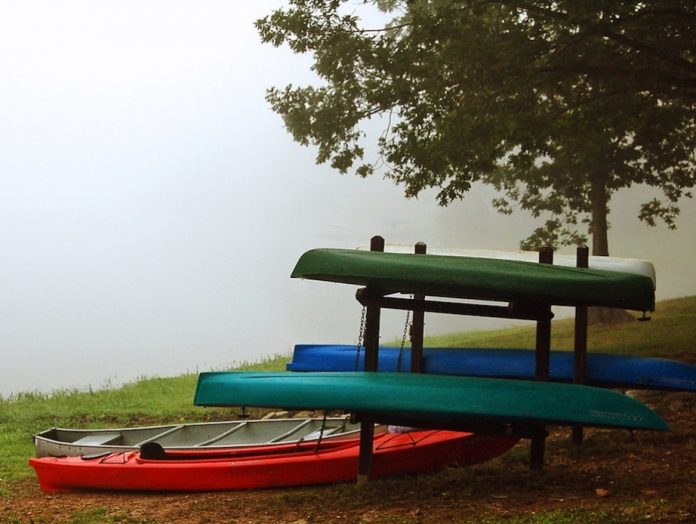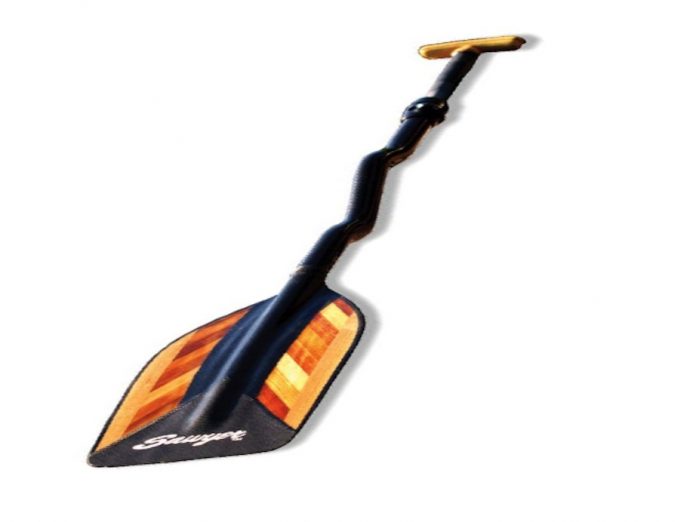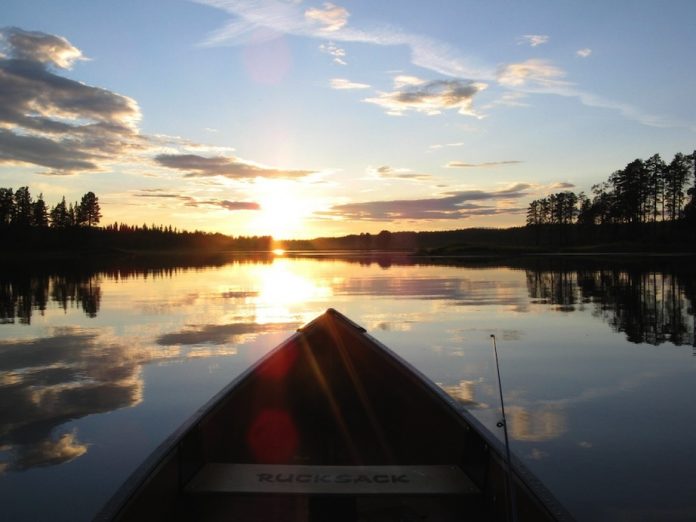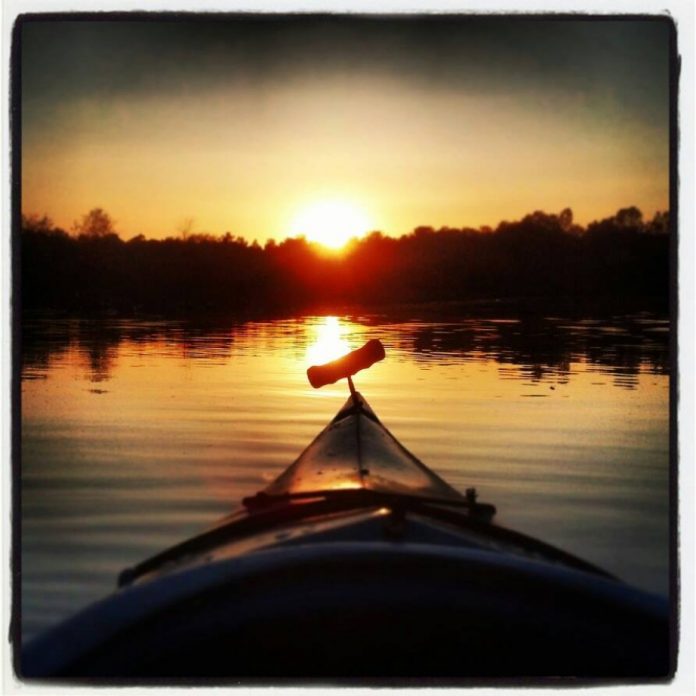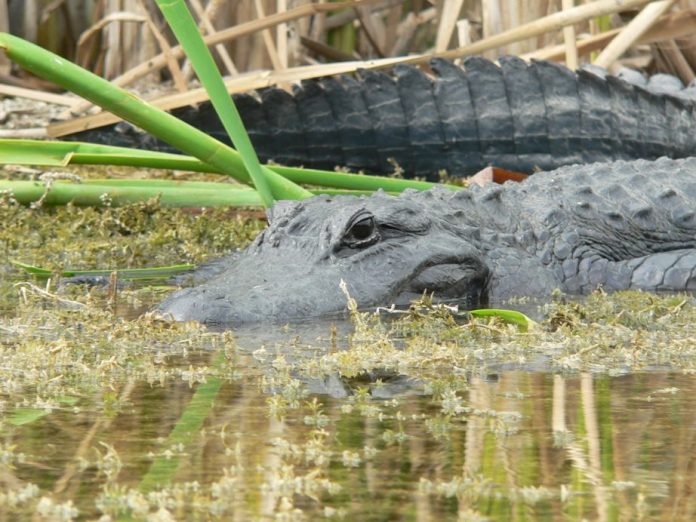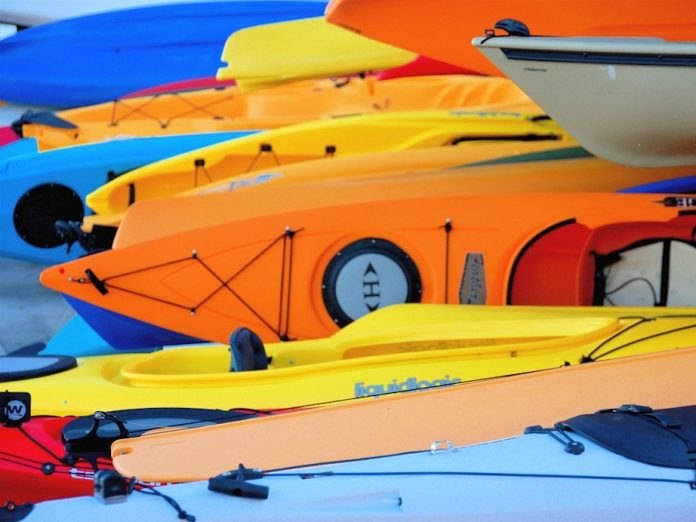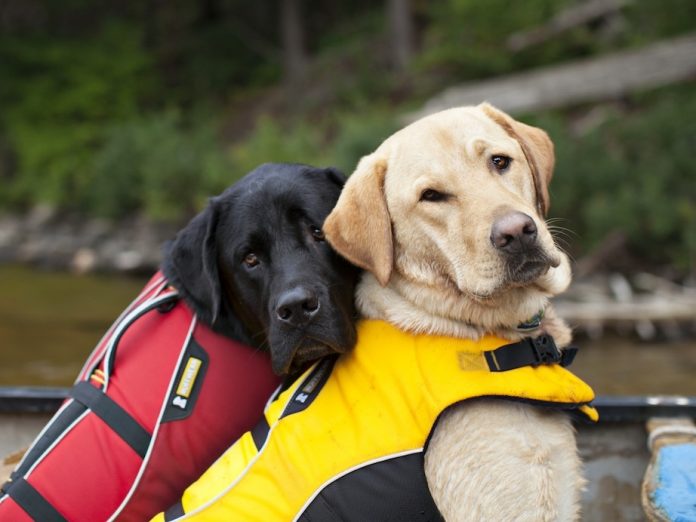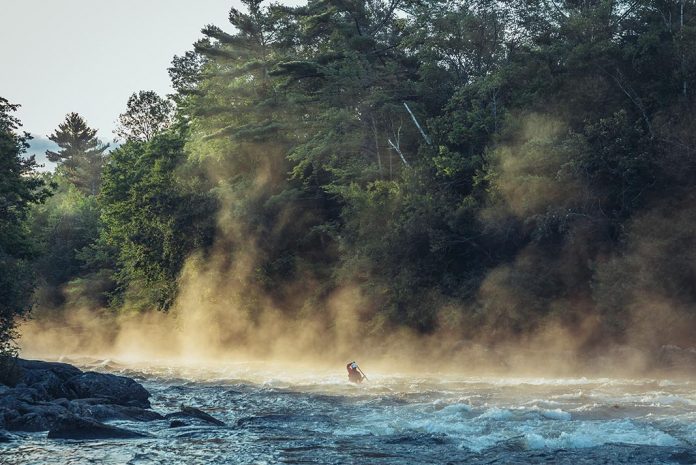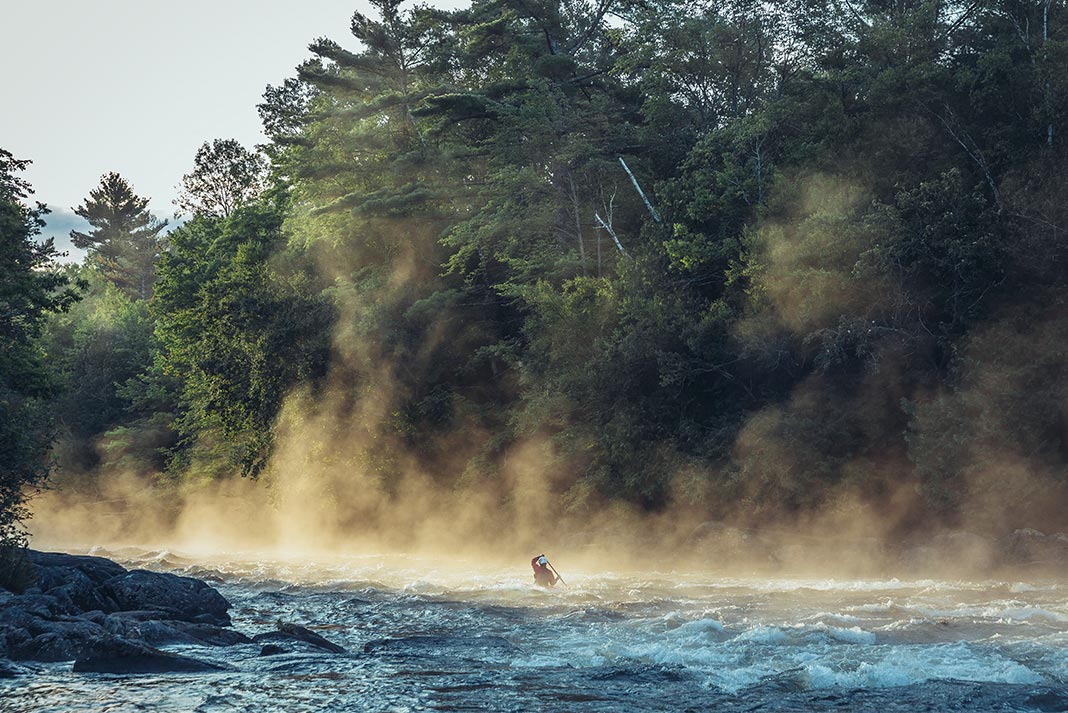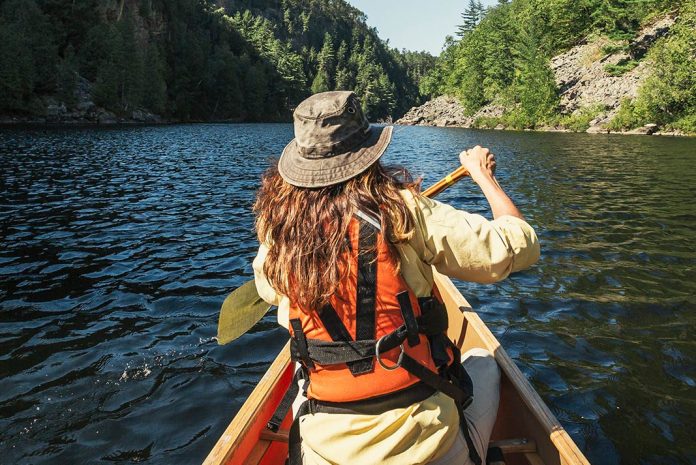Don’t leave your best friend at home when you paddle—your pooch is ready to take the plunge. Whether it’s protection against marauding chipmunks, a snuggly tent mate or a companion to wile away long hours with on the water, Rover is ready to provide. “The truth is 99 percent of dogs are fine in a canoe,” says Kathryn Howell, owner of Dog Paddling Adventures, an outfitter that provides dog-friendly canoe camping adventures. “They’re so happy to be out there, all they need is a lifejacket.” Flatwater routes and slow-moving rivers are ideal to create a sense of security and a non-slip pad on the hull of the canoe goes a long way to making your pooch feel more stable. Rules differ from coast to coast—not every park or wilderness area allows pets in the backcountry, but these ones do.
Seven Carries – Adirondacks
The historic Seven Carries, located in the Saint Regis Canoe Area, is a beautiful paddling destination. Portages are gentle and camping is first come, first served. This designated wilderness area is the largest in the Northeast. Expect loons, great swimming and better fishing. At nine miles, it’s a chance to test your dog’s sea legs. Shuttle needed. www.visitadirondacks.com
Sayward Forest Canoe Route – Vancouver Island
One of the most extensive freshwater paddling routes on the island, twelve lakes make up this circuit. Paddle the entire 50 kilometers or just a portion. Your pooch will appreciate the chance to stretch his legs on the eight kilometers of portages throughout the circuit and you’ll appreciate that much of it accommodates wheeled carts—are you thinking what I’m thinking? Mush! www. vancouverisland.com.
Current River – Missouri
Spring-fed, cold and clear, the Current River in Missouri boasts caves, trails and historic sites along its banks. Part of the Ozark National Scenic Riverways, the Current offers numerous outfitters, access points and camping options. Take Fido for a day trip or embark on more than 70 miles of float paddling. www.nps.gov/ozar/index.htm.
Sabine River – Texas
On the border between Texas and Louisiana, this is a river of solitude for you and your canine friend. Camp on white sand beaches and paddle past shores lined with cypress, willow and sweetgum. Start your trip downstream of the Toledo Bend Reservoir—you can take out after 28 miles or canoe up to 120 miles before you near the Gulf of Mexico.
La Vérendrye Wildlife Reserve – Quebec
North of Montreal in the province of Quebec, La Verendrye Wildlife Reserve covers some 8,000 square kilometers of ruff backcountry and is home to more than 40 species of wildlife and 150 species of birds. With options ranging from day trips to 105-mile circuits, there’s something for everyone.
www.canot-camping.ca.
This article first appeared in Canoeroots & Family Camping, Spring 2013 issue. Download our free iPad/iPhone/iPod Touch App or Android App or read it here.



